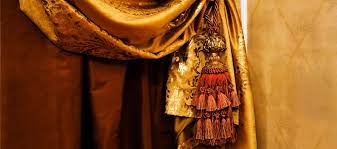It is likely that in the caves of the Neanderthals, the woman of the cave realised the danger of the elements and covered the portals with animal hide. Animal hides, furs and membranes are the ancestors to today’s curtain materials used for window treatments.
Curtains on doors, windows and shower areas have become a necessity over time. Old sailing ships, covered waggons, and log cabins all used curtains. The small windows of colourfully painted wooden Gypsy carts were covered with dainty drapes. For Curtains Cheltenham, visit https://laskeys.com/bespoke-curtains/curtains-cheltenham
Native Americans in North America stretched hide to make tents. The tent doors were made into curtain flaps for entry and exit. The flap was also used to keep out insects, dust and other bad weather elements.
Curtains evolved from a simple window treatment to an ornamental one with the progress of culture and society. Elegant drapery was used to cover the long cross-pane windows of castles and houses of lower royalty. The fabrics were velvet, organdy, or fine lace. The finest handcrafted curtains were made in Belgium and Ireland.
Even the bedroom had curtains. In Scandinavia and Europe, bed curtains were attached to a frame by rings high above the mattress. The majority of bed curtains are made out of more durable materials such as cotton or dimity. In tropical climates curtains are used to protect against dust storms or insects. Seductive bamboo cane curtains or beaded curtains made of coloured glass, hung vertically in the Orient added mystique to a room. Other Oriental countries used gossamer fabrics in vibrant fuschia or purple, as well as green, for curtains.
The inner side of the curtain was sewn with a pocket through which a rod can be inserted. A decorative wooden covering is often added above the curtain rod. Europeans often used a combination of drape and curtain to protect themselves from the damp and cold weather. Certain curtain styles were associated with social class, as well as the expensive materials imported by traders from the Far East and other exotic regions.
Curtains have evolved over the years into many different styles, including pinch-pleated draperies and tab-pleated curtains. Valances, ornamental cornices, and curtain tie-backs are also available in a variety of styles.
In the primitive era, curtains were attached to windows using sticky sap. Curtain rods began to be made of hand-hewn hardwoods, such as oak, birch, or other hardwoods, as curtain sophistication increased. Although some rods are made of wood, the majority are made from metal or synthetic materials.
Curtains have been a staple in any décor for centuries. Curtain styles may change due to trends and innovations in design but they still serve their original purpose: protecting from excessive sun exposure and drafts. Curtains can also add a finishing touch to any room. There are so many styles, materials and designs to choose from.





